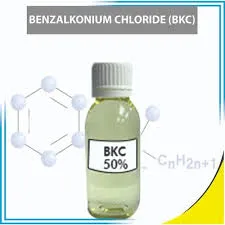polyacrylamide water treatment
The Role of Polyacrylamide in Water Treatment
Water is an essential resource that sustains life, but access to clean water remains a pressing global issue. With increasing industrialization, urbanization, and population growth, the demand for effective water treatment solutions has never been higher. One such innovative approach that has gained traction is the use of polyacrylamide (PAM), a synthetic polymer that plays a critical role in water treatment processes.
Polyacrylamide is widely utilized in various water treatment applications due to its excellent flocculation properties. Flocculation is the process by which fine particulates clump together to form larger aggregates, known as flocs, which can subsequently be removed from water through sedimentation or filtration. PAM aids this process by increasing the rate of settling for suspended solids, effectively enhancing the clarity and quality of water.
The Role of Polyacrylamide in Water Treatment
In addition to its flocculation abilities, polyacrylamide can also be tailored to meet specific water treatment needs through its various derivatives. PAM exists in different forms, including anionic, cationic, and non-ionic variants, each designed for particular applications. Anionic PAM, for example, is well-suited for treating wastewater with high levels of positively charged particles, while cationic PAM is ideal for applications where negatively charged suspended solids predominate.
polyacrylamide water treatment

One notable application of polyacrylamide is in the treatment of industrial wastewater. Industries such as mining, textiles, and food processing generate substantial amounts of wastewater laden with contaminants. The introduction of PAM into treatment systems can significantly enhance the efficiency of solid-liquid separation, leading to cleaner effluent that meets regulatory standards. This is particularly important as industries increasingly face pressure to adopt sustainable practices and reduce their environmental impact.
Moreover, PAM is beneficial in drinking water treatment. It can improve the performance of conventional processes such as sedimentation and filtration, promoting the removal of turbidity and pathogens. With the continued rise of waterborne diseases, ensuring safe drinking water is critical for public health. The incorporation of polyacrylamide can enhance the effectiveness of treatment plants, ensuring that communities have access to clean, potable water.
The use of polyacrylamide in water treatment is not without its challenges, however. Concerns have been raised regarding the potential toxicity of acrylamide, a component of PAM, particularly in the context of residual chemicals in treated water. Therefore, the concentration and application methods of PAM must be carefully managed to mitigate these risks. Regulatory agencies are continuously evaluating the safety and environmental impacts of PAM to ensure its responsible use in water treatment.
In conclusion, polyacrylamide plays a vital role in modern water treatment practices. Its ability to enhance flocculation processes significantly improves the removal of suspended solids and contaminants, making it an indispensable tool in both industrial and municipal settings. As the global demand for clean water continues to rise, the innovative application of polyacrylamide will be critical in addressing water quality challenges. By advancing our understanding of this versatile polymer and implementing best practices in its use, we can make significant strides toward achieving sustainable water management and safeguarding public health.
-
Understanding Polycarboxylic Acids: Properties, Applications, and Future PotentialNewsJul.28,2025
-
Scale Inhibitor Explained: How to Protect Your System from Limescale and Hard Water DamageNewsJul.28,2025
-
Scale and Corrosion Inhibitors: Essential Chemicals for Industrial Water System ProtectionNewsJul.28,2025
-
Polyaspartic Acid: A Biodegradable Polymer for Sustainable ChemistryNewsJul.28,2025
-
Isothiazolinones: A Versatile Antimicrobial Class with Industrial Power and Regulatory ChallengesNewsJul.28,2025
-
A Deep Dive into 2-Phosphonobutane-1,2,4-Tricarboxylic Acid (PBTC)NewsJul.28,2025





